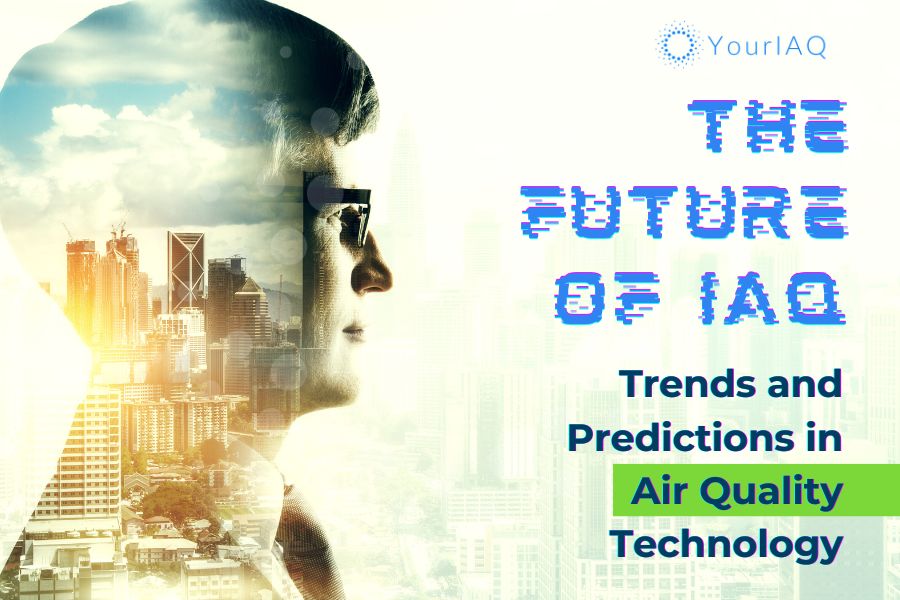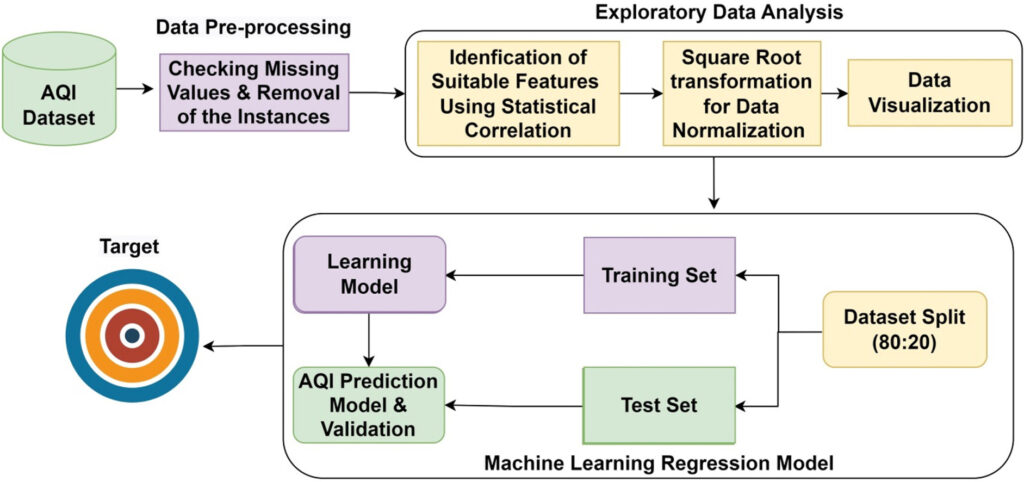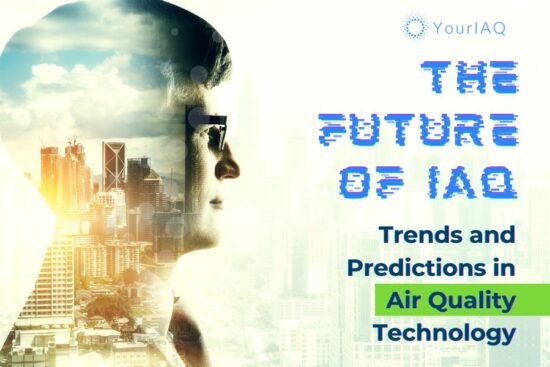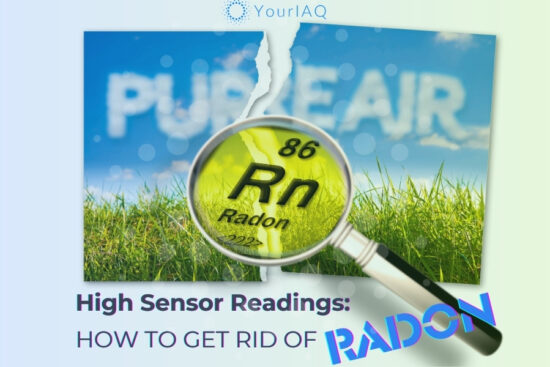
Want a glimpse into the future of cleaner indoor air? Let’s dive into some air quality tech predictions. Think about how much time you spend indoors. Whether at home, work, or even your favorite coffee shop, the air you breathe matters – a lot.
Poor indoor air quality (IAQ) can make you feel stuffy, trigger allergies, or have more serious long-term health effects. Thankfully, the way we manage the air we breathe is changing rapidly, all thanks to incredible new air purifier technologies.
Smart Home Systems
Imagine walking in the door, and your air purifier kicks into gear because it knows the high pollen count today. That’s the power of the smart home revolution, transforming how we think about smart air cleaning!
Air purifiers are connected to systems like Alexa and Google Home. You can use voice commands, set schedules, and even connect your purifier to other smart sensors in your home. Plus, new smart filters can monitor their performance and adapt to provide the most effective cleaning when needed.
It’s all about convenient, automatic air quality management.
AI: The Future of Proactive Air Quality
Forget just reacting to poor air quality – it’s time to get ahead of it!
Artificial intelligence (AI) and machine learning transform how we think about indoor air. Imagine a super-smart weather forecast for your home’s air: AI systems analyze vast amounts of data on indoor and outdoor pollution, weather patterns, and even your habits. This lets them do more than predict pollution spikes or pinpoint those sneaky sources of allergens; they’re also helping us understand long-term IAQ trends that lead to better air purification technology.

With AI, your air purifier isn’t just working, it’s learning. It can anticipate high-pollution days, identify the source of that mysterious allergic reaction, and ensure it’s always performing at its best for your needs.
AI’s potential extends far beyond the individual home. In India, scientists use geospatial AI and machine learning to map pollution hotspots, track air quality changes over time, and even predict major pollution events. This analysis is crucial for making informed decisions and improving air quality for entire regions.
While AI is incredibly powerful, it’s important to remember that even the smartest systems have limitations. Extreme events like wildfires can be harder to predict, highlighting the value of combining AI with traditional forecasting methods for the most accurate picture of air quality.
Are you curious about the deeper connection between AI and air quality? We’ve got a whole article on the topic: AI and Indoor Air Quality
The Air Purification Revolution: Upcoming Air Purifier Technologies
HEPA filters are great – they’ve been our air-cleaning heroes for a long time. But get ready, a revolution is underway!
Innovative Filtration: Could Corn Replace Petroleum in Your Air Filter?
Researchers are developing cutting-edge filtration materials.
For example, a February 2023 study found that filters made from corn protein offer several key advantages. These filters can capture incredibly small particles, similar to HEPA filters, while also removing harmful chemicals like formaldehyde – something many current filters struggle with.
Plus, they offer an environmentally friendly alternative to petroleum-based filters. New materials like nanofibers and graphene are also taking filtration to the next level, capable of trapping even the tiniest particles, including some viruses.
Beyond Filtration: Chemical Decomposition by NCCO Tech
Traditional air purifiers often focus on trapping pollutants within filters. However, a new wave of technologies aims to go further, actively breaking down or transforming pollutants into harmless substances.
Let’s look at a prime example of this innovation:
What is Nano-Confined Catalytic Oxidation (NCCO)?
This process directly decomposes air pollutants into water and carbon dioxide using active oxygen. It offers several distinct advantages:
- Energy Saving: No extraction or exhaust systems are needed.
- Cost-Efficient: NCCO reactors don’t have the saturation problems of activated carbon filters.
- No Secondary Pollution: Pollutants aren’t just trapped, but broken down.
- Wide-Ranging Effectiveness: Works against airborne organisms, VOCs, chemicals, particulate matter, and more.
- Environmentally Friendly: Less solid waste and recyclable materials.
The primary drawback of NCCO is a higher static pressure drop across the reactor.
Filterless Innovations: Is This the Future of IAQ?
Could the future of clean indoor air be filterless? Innovations in air purification are moving beyond simply trapping pollutants. New technologies actively target harmful substances, transforming or removing them entirely. Let’s explore two exciting examples of this shift:
How Does Cloud-Air-Purifying (CAP) System Work?
Forget traditional filters! The CAP air purifier employs cutting-edge technologies to clean your air. Here’s how this innovative system works:
- Heterogeneous Condensation: The CAP creates a supersaturated water vapor environment. This causes fine particles in the air to act as condensation points, making them grow larger and heavier.
- Supergravity Collection: The enlarged particles are then subjected to a supergravity field, which forces them to settle and be collected.
- Disinfection: The CAP combines ultraviolet (UV) light and a disinfectant (ClO2) to neutralize bioaerosols like bacteria and viruses actively.
Proven Effectiveness
Tests show the CAP system boasts a high clean air delivery rate (CADR) and excels at removing fine particulate matter (PM10 and smaller):
- Particulate Removal: Removes 93% of PM10 and 91% of particles between 0.5–1 μm within 60 minutes, significantly outperforming natural decay.
- Disinfection: Achieves a 99.99997% reduction in bioaerosols in just 20 minutes, demonstrating remarkable effectiveness against airborne pathogens.
Water-Based Air Purification Technology: Is This The Best Innovation In IAQ?
A new water-based air purification technology, called ISCLEANAIR’s APA system, represents a significant advancement in filterless air purification methodologies. Traditional air purification often relies on HEPA filtration, which necessitates costly filter replacements and can be ineffective against certain pollutants.
APA technology offers a compelling alternative due to its unique design and multi-faceted purification process.
Mechanism of Action
The APA system employs a three-stage purification process:
- Gas-Fluid Mixing: Ambient air is drawn into a chamber and mixed with water to create a slurry. This initial process traps pollutants within the water.
- Shower Scrubber: The slurry is passed through a shower scrubber for further pollutant removal.
- Wet Deposition & Absorption: A patented “depositions stack” system promotes pollutants’ final precipitation and absorption, maximizing overall efficiency.
Effectiveness
APA technology demonstrates a broad spectrum of effectiveness:
- Particulate Matter: Removes a wide range of particulate matter, including ultrafine nanoparticles known for their health risks.
- Chemical Pollutants: Capable of scrubbing various gaseous pollutants from the air.
- CO2 Reduction: Recent tests indicate the potential for direct CO2 capture, making it an intriguing solution for addressing climate change concerns.
- Viral and Bacterial Disinfection: The optional UVX enhancement provides additional protection against airborne pathogens.
Environmental Impact
APA technology aligns strongly with environmental sustainability principles:
- Filterless Design: Eliminates the waste and cost associated with traditional filter replacements.
- Safe Byproduct: The system produces a simple liquid byproduct resembling rainwater that can be safely integrated into existing wastewater systems.
Potential Applications
The versatility of APA technology lends itself to diverse applications:
- Urban Environments: Integrating public infrastructure such as lampposts, bus stops, or urban furniture can improve air quality in high-traffic areas.
- Industrial Settings: These can be incorporated into existing industrial facilities to reduce emissions and improve working conditions.
- Indoor Air Quality: Smaller-scale APA systems could be developed for homes and offices.
This technology offers a promising solution for indoor and outdoor air pollution challenges. Its filterless design, wide-ranging effectiveness, and environmentally conscious approach position it as a strong contender in the rapidly evolving air purification market.
The best part? This air-cleaning evolution doesn’t have to break the bank. Innovations in energy efficiency mean you can breathe more easily without worrying about sky-high power bills. Let’s take a look at how IAQ tech is becoming more energy-efficient.
Related reading: How Do Sensors Work?
Energy-Efficient and Cost-Saving IAQ Solutions
You might be surprised to learn that running an air purifier 24/7 can have a tangible impact on your energy bills. But don’t worry, new IAQ tech isn’t just about better air, it’s about smarter air cleaning. Here are some key trends in energy-efficient IAQ solutions:
- Variable Speed Technology: Many new air purifiers automatically adjust fan and motor speed based on real-time air quality needs, using less energy during low-pollution periods.
- Sleep Modes & Smart Scheduling: These features allow for ultra-quiet operation or even scheduled purifier downtime when air quality is good, conserving energy.
- Sensors 2.0: Advanced sensors analyze the specific pollutants present, triggering targeted cleaning modes and avoiding unnecessary high-power operations.
- Filter Advancements: Energy-saving filter designs focus on high airflow with low resistance, while longer-lasting filters reduce replacement costs.
- Focus on Standby Power: New models minimize power consumption even when “off,” saving you money long-term.
All of this means you can breathe easier, knowing your air purifier isn’t a major energy drain.
| Did you know?
Self-cleaning technologies are making air purifiers even more convenient. Features like self-cleaning filters, UV-based cleaning systems for internal components, and washable pre-filters can significantly reduce the frequency of maintenance tasks. These advancements not only save you time but also help reduce overall waste. |
Personalized Air: It’s All About You
Not everyone has the same air quality needs. That’s why personalization is huge! Wearable air quality monitors let you track what’s in the air around you. New purifiers can learn what sets off your allergies or adjust their power based on your health conditions. Some even tap into hyperlocal pollution data to stay ahead of bad air days. It’s putting you in control of the air you breathe.
If you’re intrigued by building a DIY air quality monitor, we have an article on the pros, cons, and pitfalls: DIY Air Quality Monitor Pitfalls.
The Future of Air Quality is Bright!
These innovations in air purifiers are a snapshot of current and future IAQ technology trends. They demonstrate a focus on making better air quality easier than ever.
If you care about your health, comfort, and even your energy bills, exploring these new technologies is well worth your time.
But… the innovation just doesn’t stop there! Researchers are pushing the boundaries of how we predict and monitor air quality.
Images From the Sky
Researchers are pushing the boundaries of how we predict air quality. Imagine if instead of relying on specialized sensors, we could use everyday images to understand what’s in the air we breathe.
This might sound like science fiction, but it’s a real area of research! Scientists are using powerful image analysis techniques (called Convolutional Neural Networks) to train computers to spot patterns in photos of the sky that reveal pollution levels. This technology is still in its early stages but can potentially make air quality prediction more accessible and widespread.
A New Perspective with Drones
Drones equipped with advanced sensors are changing how we monitor air quality. Unlike traditional monitoring stations that are fixed in place, drones offer incredible flexibility. They can reach rugged terrain or even hazardous areas where setting up sensors is impractical.
This allows them to create detailed, real-time pollution maps that pinpoint precisely the most severe air quality problems. Drones can even help track pollution back to its source, which is crucial for developing practical solutions and regulations.
TAKEAWAY
As researchers continue to push the boundaries of air quality monitoring and purification, we can expect even more personalized, efficient, and eco-friendly solutions on the horizon. Could nanoparticles revolutionize filters? What about self-repairing membranes?
The quest for cleaner air is an ongoing journey that promises everyone a healthier and more comfortable future!
Air Purification Technology Glossary
Having trouble keeping track of all the new IAQ terms? This glossary provides quick definitions for some of the technologies and concepts you’ve encountered in the article.
AI (Artificial Intelligence)
Technology that allows machines to mimic human-like learning and decision-making abilities. In air purification, AI helps analyze air quality data and predict pollution patterns.
Bioaerosols
Tiny airborne particles of biological origin, such as bacteria, viruses, and mold spores.
CAP (Cloud-Air-Purifying)
A filterless air purification system that uses condensation, supergravity, and disinfection to clean the air.
Convolutional Neural Networks
A type of AI specifically designed for image analysis, used to identify pollution patterns in photos of the sky.
HEPA (High-Efficiency Particulate Air)
A type of filter that captures very small particles, including some allergens and viruses.
Heterogeneous Condensation
A process where water vapor condenses around particles in the air, making them larger and easier to remove.
NCCO (Nano-Confined Catalytic Oxidation)
A technology that uses catalysts to break down air pollutants into harmless substances.
Particulate Matter (PM)
Tiny particles suspended in the air, some of which can be harmful if inhaled.
Smart Home Integration
The ability of air purifiers to connect with smart home systems like Alexa and Google Home, allowing for voice control and automation.
Supergravity
A force much stronger than Earth’s gravity, used in some air purification systems to help collect enlarged particles.
UVX Enhancement
The use of ultraviolet light, sometimes combined with special materials, to provide an additional layer of disinfection in air purification systems.
Air Quality Tech Predictions FAQs
Considering investing in new air quality tech? This FAQ provides insights and answers to help you decide what’s right for you.
Do I need to invest in new air quality technology?
If you’re concerned about the air you breathe, it’s worth exploring! Technologies can help you monitor air quality, remove pollutants, and create a healthier indoor environment. Consider your needs (allergies, sensitivities, etc.) and the options available.
What’s the most exciting air quality innovation right now?
This is constantly changing! Advancements in AI-powered prediction, filterless purification systems, and even image-based air quality analysis are incredibly promising.
Beyond filters, what other solutions are there?
Innovations go far beyond traditional air purifiers. Systems using condensation, chemical decomposition, and even self-cleaning technologies offer exciting alternatives for a variety of situations.
How can I track the effectiveness of these technologies?
Many newer systems have built-in sensors. You can also purchase standalone air quality monitors to track pollutants like PM2.5, VOCs, and others. Ultimately, if you notice improved comfort and health, that’s a positive sign!
Can these technologies really make a long-term difference to my health?
While not a replacement for medical care, cleaner air is a key factor in overall well-being. Reducing allergens, pollutants, and potentially some airborne pathogens can have significant benefits, especially for those with respiratory or immune system sensitivities.
References
Hardini, M., Chakim, M. H. R., Magdalena, L., Kenta, H., Rafika, A. S., & Julianingsih, D. (2023). Image-based Air Quality Prediction using Convolutional Neural Networks and Machine Learning. Aptisi Transactions on Technopreneurship, 5(1Sp), 109–123. https://doi.org/10.34306/att.v5i1sp.337
Kwok, A., Hong, C. & Kwok, E. Evaluation of nano-confined catalytic oxidation air purification technology on eliminating marijuana chemicals and odour. SN Appl. Sci. 3, 808 (2021). https://doi.org/10.1007/s42452-021-04783-2
Ravindiran, G., Hayder, G., Kanagarathinam, K., Alagumalai, A., & Sonne, C. (2023). Air quality prediction by machine learning models: A predictive study on the indian coastal city of Visakhapatnam. Chemosphere, 338, 139518. https://doi.org/10.1016/j.chemosphere.2023.139518
Washington State University. (2023, February 23). Novel air filter captures wide variety of pollutants. ScienceDaily. Retrieved April 22, 2024 from www.sciencedaily.com/releases/2023/02/230223132859.htm
Yan, S., Liu, C., Hou, L., Wang, B., & Zhang, Y. (2023). A new filterless indoor air purifier for particulate matter and bioaerosol based on heterogeneous condensation. Environmental Research, 218, 115034. https://doi.org/10.1016/j.envres.2022.115034
Innovation in air purification. (2023, May 29). Forest Valley. Retrieved April 23, 2024, from https://www.forestvalley.org/article/innovation-in-air-purification







